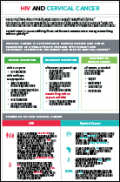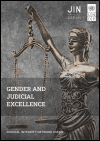What's New
Displaying results 221 - 230 of 4913

Resource | Publications,
The available evidence shows that there has been too little progress in preventing gender-related killings of women and girls. Concerted, urgent action is needed, to improve the knowledge base and strengthen responses to gender-related killings and other forms of gender-based violence against women and girls.
By ensuring that every victim is counted, we can ensure that perpetrators are held to account and justice is served. By improving understanding of all types of gender-related killings of women and girls, we can strengthen prevention and improve responses.
This paper features policy recommendations to support comprehensive and multisectoral approaches to prevent and address gender-related killings and other forms of gender-based violence against women and girls.

Resource | Publications,
Every year, more than one billion children – or half of the world’s children – experience some form of violence. Exposure to violence compromises a child’s mental and social development, hampers educational outcomes, and reduces opportunities for gainful employment. It is estimated that physical, sexual, and emotional violence against children costs societies 3% to 8% of global GDP.
Current data indicates that up to 50% of sexual assaults worldwide are committed against girls under the age of 16. Risks are particularly high in conflict-affected countries – globally, at least 72 million children are living among or near armed groups who have a history of perpetrating sexual violence against children.

Resource | Publications,
UNDP’s Gender Equality Strategy 2022-2025, aligned with its Strategic Plan, guides UNDP in its efforts to assist countries in accelerating progress on gender equality and the empowerment of women over the next four years. It aims to move beyond piecemeal efforts and to instead help countries to shift power structures and the economic, social, and political systems that perpetuate discrimination.

Resource | Publications,
As gains in women’s rights remain fragile, it is important to prioritize funding for essential services that include sexual and gender-based violence (SGBV) prevention and response in COVID-19 fiscal stimulus packages and new strategies. The Vanuatu experience of close partnership with women’s rights organizations shows the importance of sustainable funding for civil society organizations to tackle SGBV. This paper will explore engagement methods, approaches, and concrete strategies of UNDP work in Vanuatu to effectively support women’s rights and feminist movements in ending violence against women and girls as key actors for sustainable, equal and participatory development.

Resource | Guidelines,
This guidelines is an updated version of the pervious “National Consolidated Guidelines on Strategic Information of HIV Response in Nepal 2016-2021”. This guidelines has been updated to serve for monitoring the priorities set by NHSP 2021-2026 and is inline with international and national strategies and plans. With restructuring of the country, the SI system should also address all three tiers of health governanace. This guidelines has aimed to become a hands-on document, with organizational/project system and other emerging issues incorporated.

Resource | Guidelines,
The objective of the guidelines is to provide updated, evidence-informed clinical and practical recommendations on case management of people with symptoms of STI. The national guidelines recommend a syndromic approach for the management of the STI.

Resource | Publications,
Women and men are differently affected by Member States’ progress towards Goal 16. Certain types of violence, trafficking, and access to justice issues affect women more than men, which risks leaving women behind when it comes to overall achievements under Goal 16.

Resource | Publications,
The Strategy outlines how UNOV/UNODC will accomplish this over the coming five years. The implementation of the Strategy will continue to strengthen the work of UNODC throughout its five thematic areas in ensuring stronger analysis of stakeholders and understanding the different impacts of criminal justice, organized crime, terrorism and corruption on the whole of society. The Strategy also recognizes that women are disproportionately underrepresented at the policy, decision-making and at the managerial level, being particularly acute in the criminal justice and law enforcement sector as well as legislative and parliamentary bodies. UNODC will therefore continue to engage with Member States to remedy instances of gender inequality and exclusion.

Resource | Infographics,
Human Papilloma Virus (HPV) is the most common sexually transmitted infection, and two types of HPV (16 and 18) cause nearly 50% of high-grade cervical pre-cancers. HIV and cervical cancer are inextricably linked. Women living with HIV are six times more likely to develop cervical cancer, which is one of the AIDS-defining illnesses and the most common cancer among women living with HIV globally. Cervical cancer is a preventable, curable disease and can be eliminated as a public health problem with primary and secondary prevention, treatment, and care of cervical cancer, in combination with addressing social, health and other inequalities and integrated approaches.

Resource | Publications,
Gender related issues can arise in any judge’s court, in any level of court, by any of the actors in the court and at any stage of a judge’s career, for both men and women. Gender issues are often dismissed as women’s issues or only thought to be relevant in cases related to the family or when women are litigants. Court staff, police officers, expert witnesses and lawyers all might bring a gendered stereotype into their conduct or the way they present evidence.





